The Adaptive Scrum: Why Modified Agile Model?
Last updated: September 07, 2024 Read in fullscreen view
- 01 Aug 2024
 The Standish Group report 83.9% of IT projects partially or completely fail 150/1772
The Standish Group report 83.9% of IT projects partially or completely fail 150/1772 - 13 Apr 2024
 Lessons on Teamwork and Leadership from Chinese story book "Journey to the West" 41/949
Lessons on Teamwork and Leadership from Chinese story book "Journey to the West" 41/949 - 10 Apr 2022
 Agile self-organizing teams: What are they? How do they work? 28/435
Agile self-organizing teams: What are they? How do they work? 28/435 - 02 Nov 2021
 What is Terms of Reference (ToR)? 23/1466
What is Terms of Reference (ToR)? 23/1466 - 18 Oct 2020
 How to use the "Knowns" and "Unknowns" technique to manage assumptions 21/989
How to use the "Knowns" and "Unknowns" technique to manage assumptions 21/989 - 21 May 2022
 "Fail Fast, Fail Often, Fail Forward" is the answer to Agile practices of software success 18/941
"Fail Fast, Fail Often, Fail Forward" is the answer to Agile practices of software success 18/941 - 01 Oct 2020
 Fail fast, learn faster with Agile methodology 13/973
Fail fast, learn faster with Agile methodology 13/973 - 03 Apr 2022
 Microsoft Solutions Framework (MSF) 12/1157
Microsoft Solutions Framework (MSF) 12/1157 - 12 Oct 2022
 14 Common Reasons Software Projects Fail (And How To Avoid Them) 10/504
14 Common Reasons Software Projects Fail (And How To Avoid Them) 10/504 - 18 Dec 2023
 The Cone of Uncertainty in Scrum & Requirement Definition 8/643
The Cone of Uncertainty in Scrum & Requirement Definition 8/643 - 10 Nov 2022
 Poor Code Indicators and How to Improve Your Code? 7/213
Poor Code Indicators and How to Improve Your Code? 7/213 - 19 Oct 2021
 Is gold plating good or bad in project management? 7/754
Is gold plating good or bad in project management? 7/754 - 18 Oct 2021
 Key Elements to Ramping Up a Large Team 7/1108
Key Elements to Ramping Up a Large Team 7/1108 - 13 Oct 2021
 Outsourcing Software Development: MVP, Proof of Concept (POC) and Prototyping. Which is better? 6/424
Outsourcing Software Development: MVP, Proof of Concept (POC) and Prototyping. Which is better? 6/424 - 06 Feb 2021
 Why fail fast and learn fast? 6/375
Why fail fast and learn fast? 6/375 - 28 Jul 2022
 POC, Prototypes, Pilots and MVP: What Are the Differences? 6/606
POC, Prototypes, Pilots and MVP: What Are the Differences? 6/606 - 01 Mar 2023
 Bug Prioritization - What are the 5 levels of priority? 6/207
Bug Prioritization - What are the 5 levels of priority? 6/207 - 07 Oct 2025
 Case Study: Using the “Messaging House” Framework to Build a Digital Transformation Roadmap 5/45
Case Study: Using the “Messaging House” Framework to Build a Digital Transformation Roadmap 5/45 - 20 Nov 2022
 Agile working method in software and football 5/323
Agile working method in software and football 5/323 - 31 Aug 2022
 What are the best practices for software contract negotiations? 5/215
What are the best practices for software contract negotiations? 5/215 - 05 Mar 2021
 How do you minimize risks when you outsource software development? 5/317
How do you minimize risks when you outsource software development? 5/317 - 14 Oct 2021
 Advantages and Disadvantages of Time and Material Contract (T&M) 4/789
Advantages and Disadvantages of Time and Material Contract (T&M) 4/789 - 12 Dec 2021
 Zero Sum Games Agile vs. Waterfall Project Management Methods 4/374
Zero Sum Games Agile vs. Waterfall Project Management Methods 4/374 - 20 Jul 2022
 Software Myths and Realities 4/797
Software Myths and Realities 4/797 - 04 Oct 2022
 Which ERP implementation strategy is right for your business? 4/278
Which ERP implementation strategy is right for your business? 4/278 - 07 Jul 2022
 Managing Project Execution Terms 3/379
Managing Project Execution Terms 3/379 - 18 Aug 2022
 What are the consequences of poor requirements with software development projects? 3/242
What are the consequences of poor requirements with software development projects? 3/242 - 01 Dec 2023
 Laws of Project Management 3/249
Laws of Project Management 3/249 - 31 Oct 2021
 Tips to Fail Fast With Outsourcing 3/375
Tips to Fail Fast With Outsourcing 3/375 - 18 Jul 2021
 How To Ramp Up An Offshore Software Development Team Quickly 3/516
How To Ramp Up An Offshore Software Development Team Quickly 3/516 - 08 Oct 2022
 KPI - The New Leadership 3/557
KPI - The New Leadership 3/557 - 05 Sep 2023
 The Cold Start Problem: How to Start and Scale Network Effects 3/167
The Cold Start Problem: How to Start and Scale Network Effects 3/167 - 10 Apr 2024
 The Parking Lot Method: Unlocking a Simple Secret to Supercharge Your Productivity 3/403
The Parking Lot Method: Unlocking a Simple Secret to Supercharge Your Productivity 3/403 - 01 May 2024
 Warren Buffett’s Golden Rule for Digital Transformation: Avoiding Tech Overload 2/188
Warren Buffett’s Golden Rule for Digital Transformation: Avoiding Tech Overload 2/188 - 05 Jun 2023
 Fractional, Part-Time (virtual) or Interim CTO: Who Will Cover Your Business Needs? 2/109
Fractional, Part-Time (virtual) or Interim CTO: Who Will Cover Your Business Needs? 2/109 - 03 Jul 2022
 Manifesto for Agile Software Development 2/240
Manifesto for Agile Software Development 2/240 - 10 Dec 2023
 Pain points of User Acceptance Testing (UAT) 2/416
Pain points of User Acceptance Testing (UAT) 2/416 - 26 Sep 2024
 Successful Project Management Techniques You Need to Look Out For 2/368
Successful Project Management Techniques You Need to Look Out For 2/368 - 12 Oct 2020
 The Agile Manifesto - Principle #8 2/447
The Agile Manifesto - Principle #8 2/447 - 07 Oct 2020
 How To Manage Expectations at Work (and Why It's Important) 2/266
How To Manage Expectations at Work (and Why It's Important) 2/266 - 04 Oct 2021
 Product Validation: The Key to Developing the Best Product Possible 2/295
Product Validation: The Key to Developing the Best Product Possible 2/295 - 23 Sep 2021
 INFOGRAPHIC: Top 9 Software Outsourcing Mistakes 2/411
INFOGRAPHIC: Top 9 Software Outsourcing Mistakes 2/411 - 17 Feb 2022
 Prioritizing Software Requirements with Kano Analysis 2/280
Prioritizing Software Requirements with Kano Analysis 2/280 - 13 Dec 2020
 Move fast, fail fast, fail-safe 2/292
Move fast, fail fast, fail-safe 2/292 - 28 Dec 2021
 8 types of pricing models in software development outsourcing 2/417
8 types of pricing models in software development outsourcing 2/417 - 28 Oct 2022
 Build Operate Transfer (B.O.T) Model in Software Outsourcing 2/361
Build Operate Transfer (B.O.T) Model in Software Outsourcing 2/361 - 02 May 2022
 What Is RAID in Project Management? (With Pros and Cons) 2/734
What Is RAID in Project Management? (With Pros and Cons) 2/734 - 24 Nov 2023
 The project management paradox: Achieving MORE by doing LESS 2/193
The project management paradox: Achieving MORE by doing LESS 2/193 - 15 May 2022
 20 Common Mistakes Made by New or Inexperienced Project Managers 2/247
20 Common Mistakes Made by New or Inexperienced Project Managers 2/247 - 14 Jun 2022
 Example and Excel template of a RACI chart in Software Development 2/707
Example and Excel template of a RACI chart in Software Development 2/707 - 12 Aug 2022
 What is End-to-end project management? 2/382
What is End-to-end project management? 2/382 - 22 May 2022
 What are common mistakes that new or inexperienced managers make? 1/243
What are common mistakes that new or inexperienced managers make? 1/243 - 07 Dec 2023
 12 project management myths to avoid 1/167
12 project management myths to avoid 1/167 - 05 Jan 2024
 Easy ASANA tips & tricks for you and your team 1/180
Easy ASANA tips & tricks for you and your team 1/180 - 11 Jan 2024
 What are the Benefits and Limitations of Augmented Intelligence? 1/434
What are the Benefits and Limitations of Augmented Intelligence? 1/434 - 26 Dec 2023
 Improving Meeting Effectiveness Through the Six Thinking Hats 1/205
Improving Meeting Effectiveness Through the Six Thinking Hats 1/205 - 27 Jan 2020
 Should a project manager push developers to work more hours due to mistakes of manager schedule setting? 1/412
Should a project manager push developers to work more hours due to mistakes of manager schedule setting? 1/412 - 19 Apr 2021
 7 Most Common Time-Wasters For Software Development 1/525
7 Most Common Time-Wasters For Software Development 1/525 - 12 Aug 2024
 Understanding Google Analytics in Mumbai: A Beginner's Guide 1/84
Understanding Google Analytics in Mumbai: A Beginner's Guide 1/84 - 01 Mar 2024
 10 Project Management Myths 1/120
10 Project Management Myths 1/120 - 04 Apr 2025
 To Act or Not to Act – A Manager’s Persistent Dilemma 1/62
To Act or Not to Act – A Manager’s Persistent Dilemma 1/62 - 15 Aug 2025
 Quantum Technology: Global Challenges and Opportunities for Innovators /56
Quantum Technology: Global Challenges and Opportunities for Innovators /56 - 02 Jun 2024
 Reviving Ancient Wisdom: The Spiritual Side of Project Management /204
Reviving Ancient Wisdom: The Spiritual Side of Project Management /204 - 06 Mar 2024
 [SemRush] What Are LSI Keywords & Why They Don‘t Matter /131
[SemRush] What Are LSI Keywords & Why They Don‘t Matter /131 - 06 Sep 2021
 Scrum Flexibility: Navigating the Boundaries of Agile Modification /275
Scrum Flexibility: Navigating the Boundaries of Agile Modification /275 - 09 Sep 2022
 Debunking 50+ Agile Scrum Interview Questions /413
Debunking 50+ Agile Scrum Interview Questions /413 - 14 Mar 2024
 Why should you opt for software localization from a professional agency? /117
Why should you opt for software localization from a professional agency? /117 - 01 Aug 2022
 Is planning "set it and forget it" or "set it and check it"? /264
Is planning "set it and forget it" or "set it and check it"? /264 - 17 Oct 2021
 Does Fast Tracking increase project cost? /348
Does Fast Tracking increase project cost? /348 - 19 Oct 2021
 Software development life cycles /628
Software development life cycles /628 - 27 Oct 2020
 8 principles of Agile Testing /1196
8 principles of Agile Testing /1196 - 21 Oct 2022
 Virtual meeting - How does TIGO save cost, reduce complexity and improve quality by remote communication? /166
Virtual meeting - How does TIGO save cost, reduce complexity and improve quality by remote communication? /166 - 13 Jan 2020
 Quiz: Test your understanding project cost management /568
Quiz: Test your understanding project cost management /568 - 06 Nov 2019
 How to Access Software Project Size? /236
How to Access Software Project Size? /236 - 09 Oct 2022
 Key Advantages and Disadvantages of Agile Methodology /666
Key Advantages and Disadvantages of Agile Methodology /666 - 10 Oct 2022
 Should Your Business Go Agile? (Infographic) /108
Should Your Business Go Agile? (Infographic) /108 - 02 Nov 2022
 Frequently Asked Questions about Agile and Scrum /372
Frequently Asked Questions about Agile and Scrum /372 - 16 Jul 2022
 What are disadvantages of Agile Methodology? How to mitigate the disadvantages ? /353
What are disadvantages of Agile Methodology? How to mitigate the disadvantages ? /353 - 01 Dec 2022
 Difference between Set-based development and Point-based development /298
Difference between Set-based development and Point-based development /298 - 28 Nov 2023
 Scrum Team Failure — Scrum Anti-Patterns Taxonomy (3) /228
Scrum Team Failure — Scrum Anti-Patterns Taxonomy (3) /228 - 30 Nov 2023
 Project Managers, Focus on Outcomes — Not Deliverables /143
Project Managers, Focus on Outcomes — Not Deliverables /143 - 01 Mar 2022
 Why Does Scrum Fail in Large Companies? /243
Why Does Scrum Fail in Large Companies? /243 - 02 Nov 2022
 Difference between Change Management and Project Management /216
Difference between Change Management and Project Management /216 - 12 Mar 2024
 How do you create FOMO in software prospects? /127
How do you create FOMO in software prospects? /127 - 23 Jun 2024
 Best Practices for Managing Project Escalations /183
Best Practices for Managing Project Escalations /183 - 21 Jun 2024
 Dead Horses and the Escalation of Commitment /123
Dead Horses and the Escalation of Commitment /123 - 02 Dec 2021
 3 Ways to Avoid Scope Creep in IT Consulting /192
3 Ways to Avoid Scope Creep in IT Consulting /192 - 01 Jun 2022
 How Your Agile Development Team is Just Like a Football Team? /206
How Your Agile Development Team is Just Like a Football Team? /206 - 06 Jun 2022
 Change Management at the Project Level /292
Change Management at the Project Level /292 - 03 Jan 2023
 Organizing your agile teams? Think about M.A.T (Mastery, Autonomy, Purpose) /333
Organizing your agile teams? Think about M.A.T (Mastery, Autonomy, Purpose) /333 - 09 May 2022
 Build one to throw away vs Second-system effect: What are differences? /297
Build one to throw away vs Second-system effect: What are differences? /297 - 10 May 2022
 Levels of Teamwork /180
Levels of Teamwork /180
Modifying Scrum – is it allowed?
Modifying Scrum is not allowed due to its well-defined nature and potential for a Scrum-isch scenario. However, every team has unique needs and should start by integrating the process as clean as possible and observing feedback. Be selective about modifications and consider the underlying causes of the issues. Scrum is perfect for people who have been using it for a long time, but it may not work for everyone.
Modifications to meeting days, times, and length for sprint kick-offs should be an option for the team to decide on. Initially, 4 hours of meeting time is recommended, but as efficiency increases, it may be possible to reduce it. The message should be that the time invested in Scrum meetings is well spent.
For retrospectives, the team should decide on a format, whether to use a spreadsheet or talk free form. Stand-ups can be a compromise, but it is not always the majority's preference. Tracking velocity may not be an easily desired change, but it is important to consider the team's needs and preferences.
Why do we use a modified Scrum Model?
It's unrealistic to assume that every project will succeed using the same approach because every customer and project is unique.
Study and analyze the circumstances of every client
In order to determine the most effective project management strategy, we evaluate the client's characteristics, including their level of involvement and availability, as well as their expertise and expectations regarding the delivery process. Once we have a better idea about these client and project realities, we then build the process around these realities.
How do roles get assigned?
When taking into account the issue of competence, for instance, a client that has experience with Scrum may be able to use internal product owners and scrum masters. Product owners are occasionally clients, while scrum masters work for TIGOSOFT. In other cases, clients have never used Scrum before, and in these cases, the project manager must take on a hybrid role, contributing to both product ownership and assisting the development team in putting in place a structure like to Scrum.
How do we work around client involvement and availability?
Not every client or member of their team has the time to attend daily standups, review meetings, planning meetings, and retrospectives due to scheduling conflicts. It would be fantastic if the client or other team members who work in the same location as the customer could attend every one of these events. If they are unable to, we will nevertheless find a way to work around these limitations by ensuring that they are involved as much as possible in these Scrum events, which at the very least occur amongst team members at TIGOSOFT to guarantee that work progress is checked on a daily basis, that working software is reviewed following each Scrum cycle, and that efficient planning is being done for the following cycle.
Best practices for developing a Modified Scrum Project
1. Requirement Breakdown and Multi-Role Collaboration
2. Continuous Iterative Delivery for Closed-Loop Feedback
Scrum is an agile, incremental, and iterative software development process. Repetitive sprints, which are closed-loop software development cycles from establishing user requirements to gathering user feedback, allow for continuous delivery.
Sprint planning meetings, daily Scrum meetings, sprint retrospective meetings, and sprint review meetings are key to simple but efficient project management.
3. Development Example
The following figure shows the basic process of a Scrum project. This process can be repeated for continuous planning and delivery in each sprint.
|
Step |
Description |
|---|---|
|
Create Scrum project |
You can invite other users to join a Scrum project after it is created. |
|
Plan requirements |
Plan requirements using mind maps or Gantt charts based on the project breakdown needs. |
|
Create work items |
Create work items after the requirements are planned. |
|
Manage sprints |
Plan and manage sprints. |
|
(Optional) Customize workflows |
Customize the workflows as required. |
|
Review sprints |
Review the sprints for improvements. |













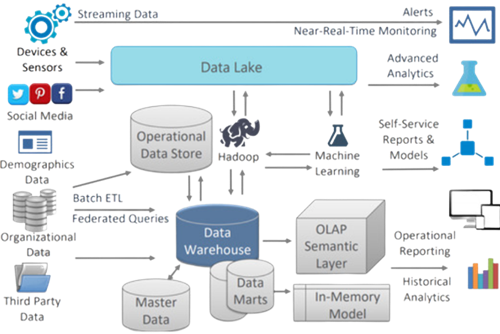
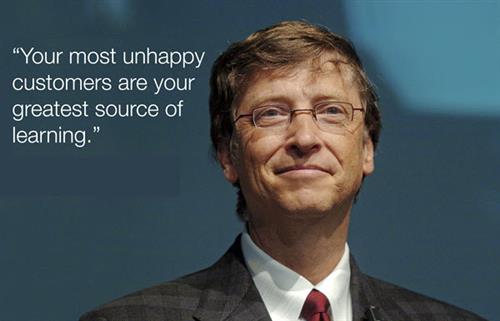
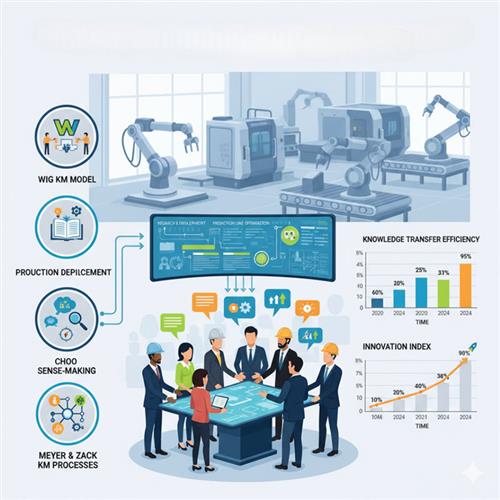




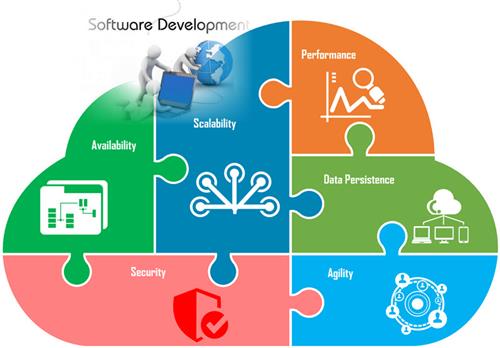



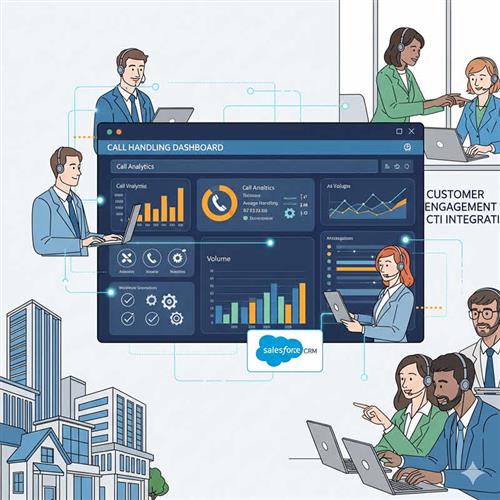










 Link copied!
Link copied!